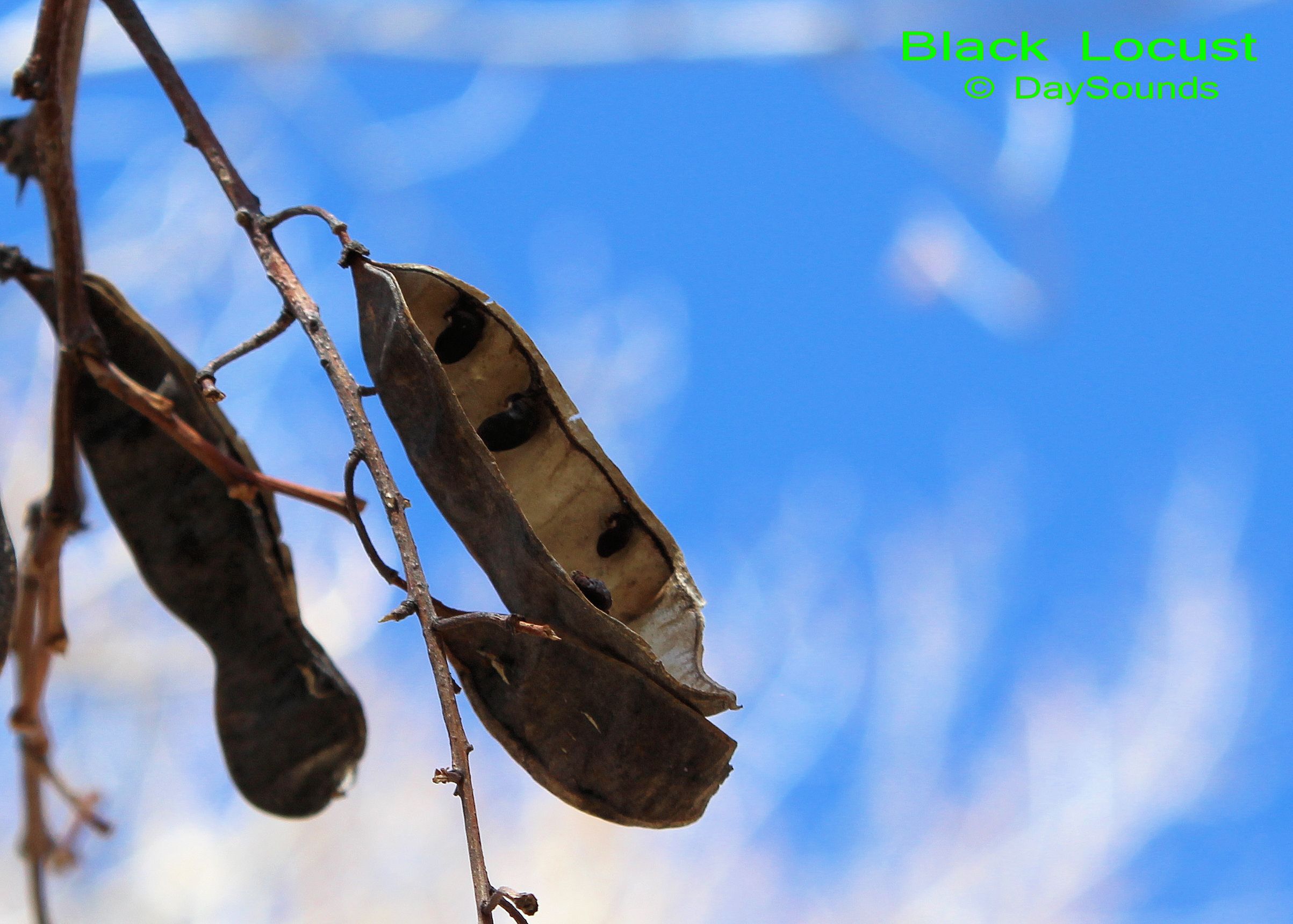by DaySounds © 2013-15

Black Locust/ False Acacia (Robinia pseudoacacia)
The white/pink, fragrant, bean-like flowers have five petals, arranged in racemes.
They usually bloom from May to June. The pod is smooth, 2 to 4 inches long, and
about 1/2 inch wide, usually producing four to eight seeds. It ripens late in the Fall
and hangs on the branches until early Spring. It opens by itself while on the tree.
Even though the bark, leaves, and pods are toxic, and laxative--to the point of producing
diarrhea, the seeds are edible; however, if consumed in excess, they can induce depression.
Used as a poultice, the leaves are helpful in the treatment of burns. Used internally, the
flowers/seeds calm stomach acid reflex, and help to fight gastritis. They are helpful with
digestion as well. They can be used in the treatment of asthma and bronchitis, as a mild
pain reliever, and to ease stress and anxiety. The flowers (especially eaten raw) might
help to fight tumors and eye problems. The seeds contain calcium, protein, and fiber.
Warning: Black Locust causes allergic reactions in some people.
The wood can be used as cooking wood because it burns slowly and provides higher
heat than most other trees, with little visible flame or smoke. It can burn even when
a little wet; however, it has a tendency to throw embers up to several yards away.
©DaySounds
PO Box 746497
Arvada, CO 80006
USA